
Concept explainers
(a)
Interpretation: The structural formula for the Diels-Alder adduct formed by cyclopentadiene has to be drawn.
Concept Introduction:
Diels-Alder reaction:
It is the reaction of conjugated dienes with double or triple bonded compounds which are known as “dienophiles”. The reaction is a
Example:
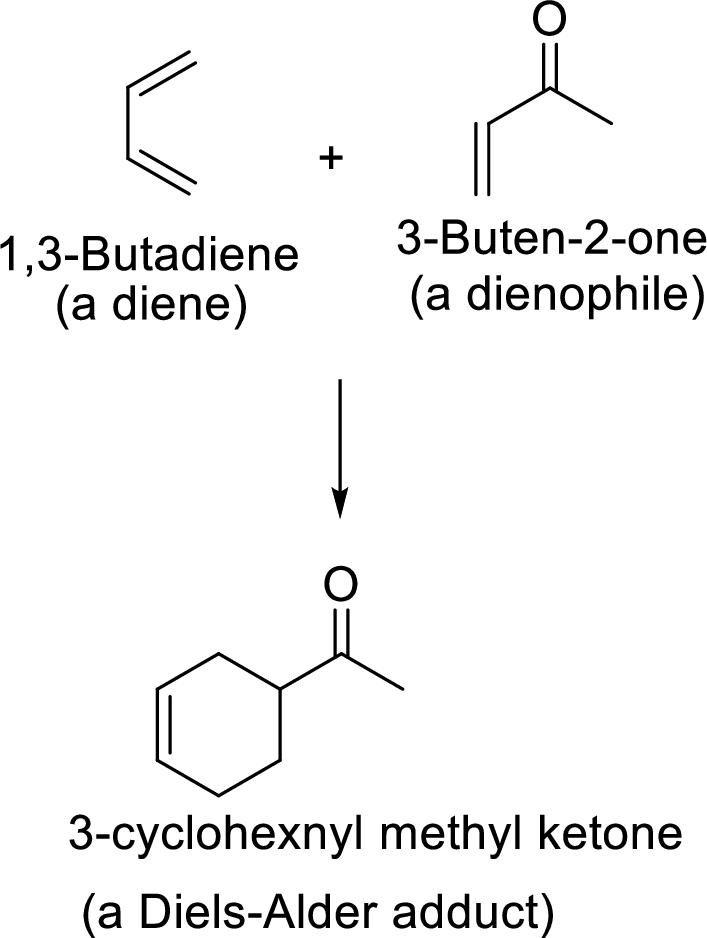
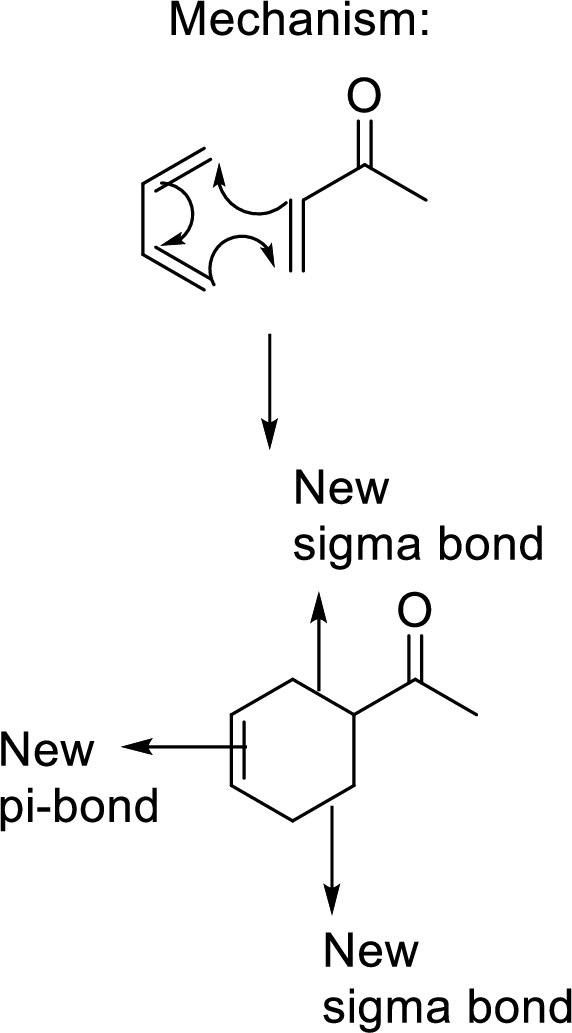
This mechanism shown that three
Diels-Alder reaction to form bicyclic system:
The Diels-Alder adduct formed in the Diels-Alder reaction can also be a bicyclic system which will be obtained when cylopentadiene is used as the diene as shown here:
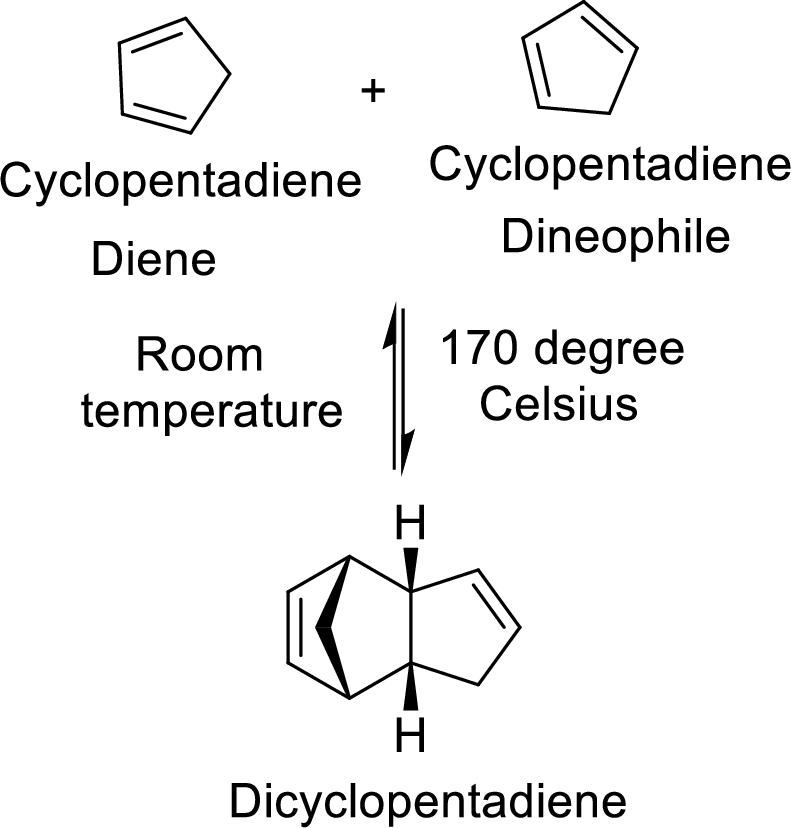
In this reaction, the cylopentadiene acts as both diene and dienophile and formed a bicyclic system. When it is heated to
(a)
Explanation of Solution
The given reaction is:

The structural formula for the Diels-Alder adduct can be found using the following mechanism of the given Diels-Alder reaction:

In this Diels-Alder reaction, one molecule of cyclopentadienone acts as a Diene whereas the other molecule of cyclopentadienone acts as a Dienophile. The resulted Diels-Alder adduct is a tricyclic product
(b)
Interpretation: The difference in the stability of the given
Concept Introduction:
Stability based on aromaticity:
The term aromaticity means “extreme stability”. So,
The aromatic compounds and anti-aromatic compounds can be distinguished based on Huckel’s
Huckel’s rule of aromaticity is
If
If
(b)
Answer to Problem 20.44P
The difference in the stability of the given ketones has been accounted as:
Cycloheptatrienone is more stable than cyclopentadienone.
Explanation of Solution
The given ketones are:
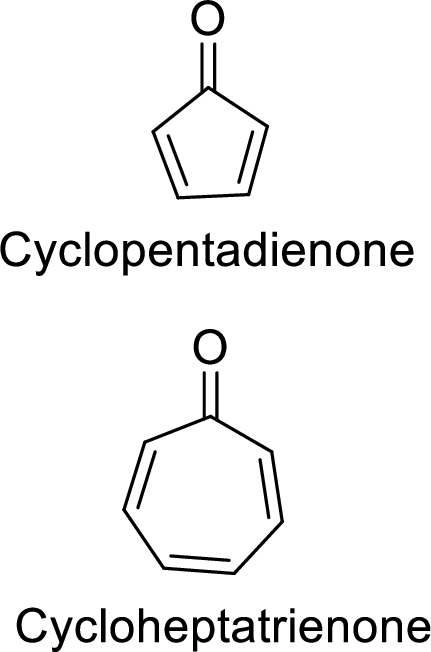
The stability of these two ketones can be distinguished based on aromaticity as discussed below:

There are two
Huckel’s rule of aromaticity:
Therefore, the given molecule has
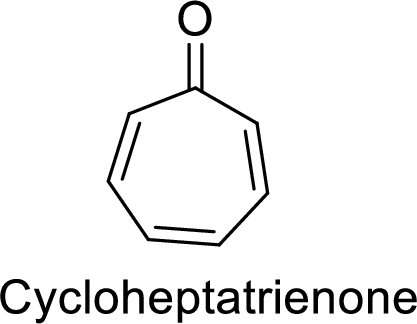
There are three
Huckel’s rule of aromaticity:
Therefore, the given molecule satisfies the Huckel’s rule of aromaticity. So, it is an anti-aromatic compound which means it is a highly stable compound.
Hence, the overall discussion makes it clear that cycloheptatrienone is more stable than cyclopentadienone.
Want to see more full solutions like this?
Chapter 20 Solutions
Organic Chemistry
- Of the three 1,4-diphenyl-1,3-butadiene isomers (E,E or E,Z or Z,Z) indicate the most suitable diene that can be used as a reactant in a Diels-Alder reaction. Explain your choice.arrow_forwardTo be aromatic, a molecule must have 4n + 2 πs electrons and must have a planar, monocyclic system of conjugation. Cyclodecapentaene fulfills one of these criteria but not the other and has resisted all attempts at synthesis. Explain.arrow_forwardUse the inscribed polygon method to show the pattern of molecular orbitals in cyclonona-1,3,5,7-tetraene, and use it to label its cation, radical, and anion as aromatic, antiaromatic, or not aromatic.arrow_forward
- As the extent of electron delocalization into the ring increases, the geometry at nitrogen flattens. p-Nitroaniline, for example, is planar. Write a resonance contributor for p-nitroaniline that shows how the nitro group increases electron delocalization.arrow_forwardThe following triene undergoes an intramolecular Diels-Alder reaction to give a bicyclic product. Propose a structural formula for the product. Account for the observation that the Diels-Alder reaction given in this problem takes place under milder conditions (at lower temperature) than the analogous Diels-Alder reaction shown in Problem 20.34.arrow_forwardHow would the molecular orbitals of cyclopenta-1,3-diene, the carbocation, carbanion, and the radical differ? Drawings would be appreciated! Thank you in advance.arrow_forward
- Which of these images are not aromatic?arrow_forwardDraw a structural formula for the product of this Diels-Alder reaction, including all stereoisomers of the productarrow_forwardImagine that you used isoprene as diene – in that case you don’t have to worry about assigning endo vs exo. Draw the "endo" and "exo" products of the Diels-Alder reaction between isoprene and maleic anhydride, and explain why the distinction is irrelevant here.arrow_forward
- Answer the following question pertaining to the reaction of maleic anhydride and 1,3-butadiene: - Specify the conformation required to enable a 1,3-diene to undergo the Diels-Alderreactionarrow_forwardDescribe the decreasing order of molecular stability (i.e., aromatic > non-aromatic > anti-aromatic)?arrow_forwardKepone, aldrin, and chlordane are synthesized from hexachlorocyclopentadiene and other five-membered-ring compounds. Show how these three pesticides are composed of two five-membered rings.arrow_forward
 Organic ChemistryChemistryISBN:9781305580350Author:William H. Brown, Brent L. Iverson, Eric Anslyn, Christopher S. FootePublisher:Cengage Learning
Organic ChemistryChemistryISBN:9781305580350Author:William H. Brown, Brent L. Iverson, Eric Anslyn, Christopher S. FootePublisher:Cengage Learning

